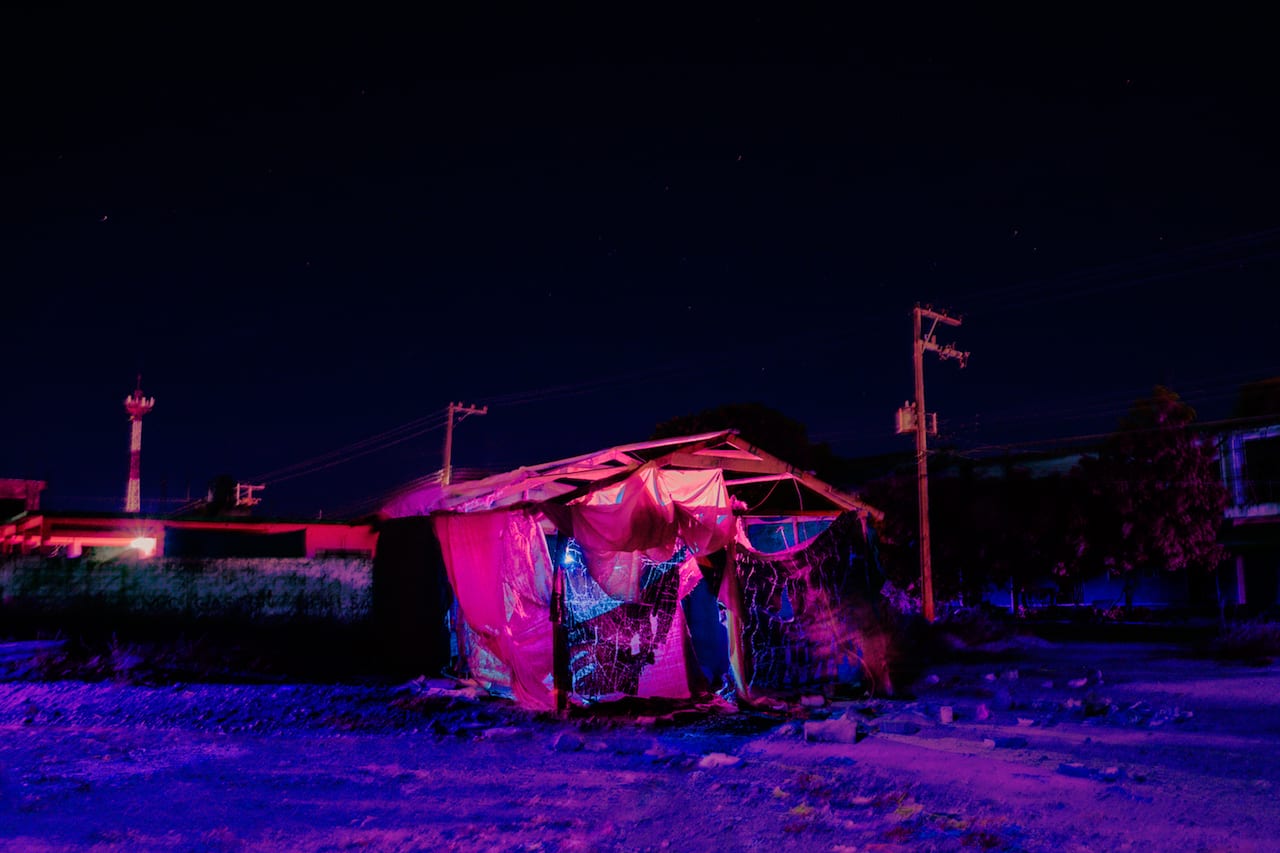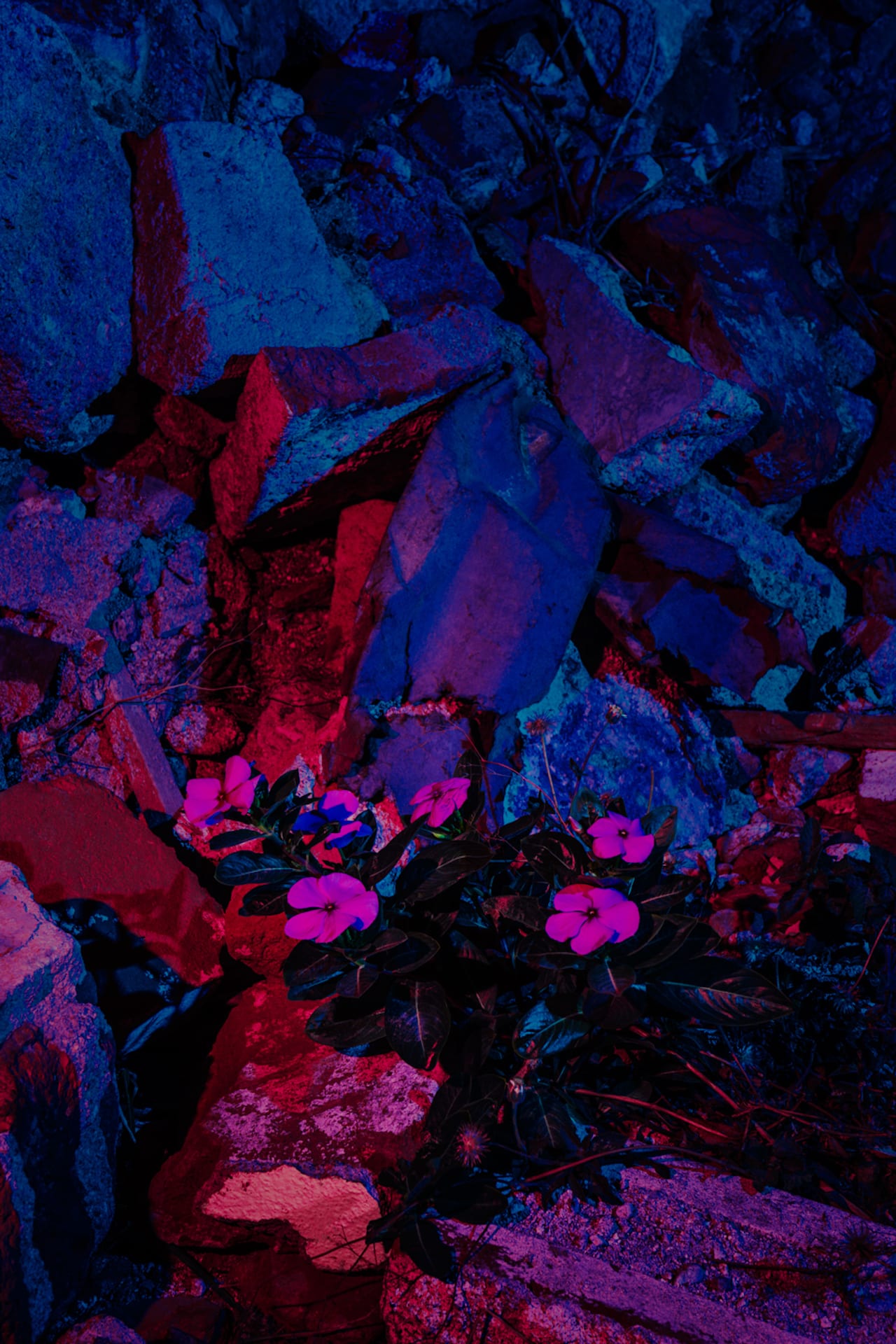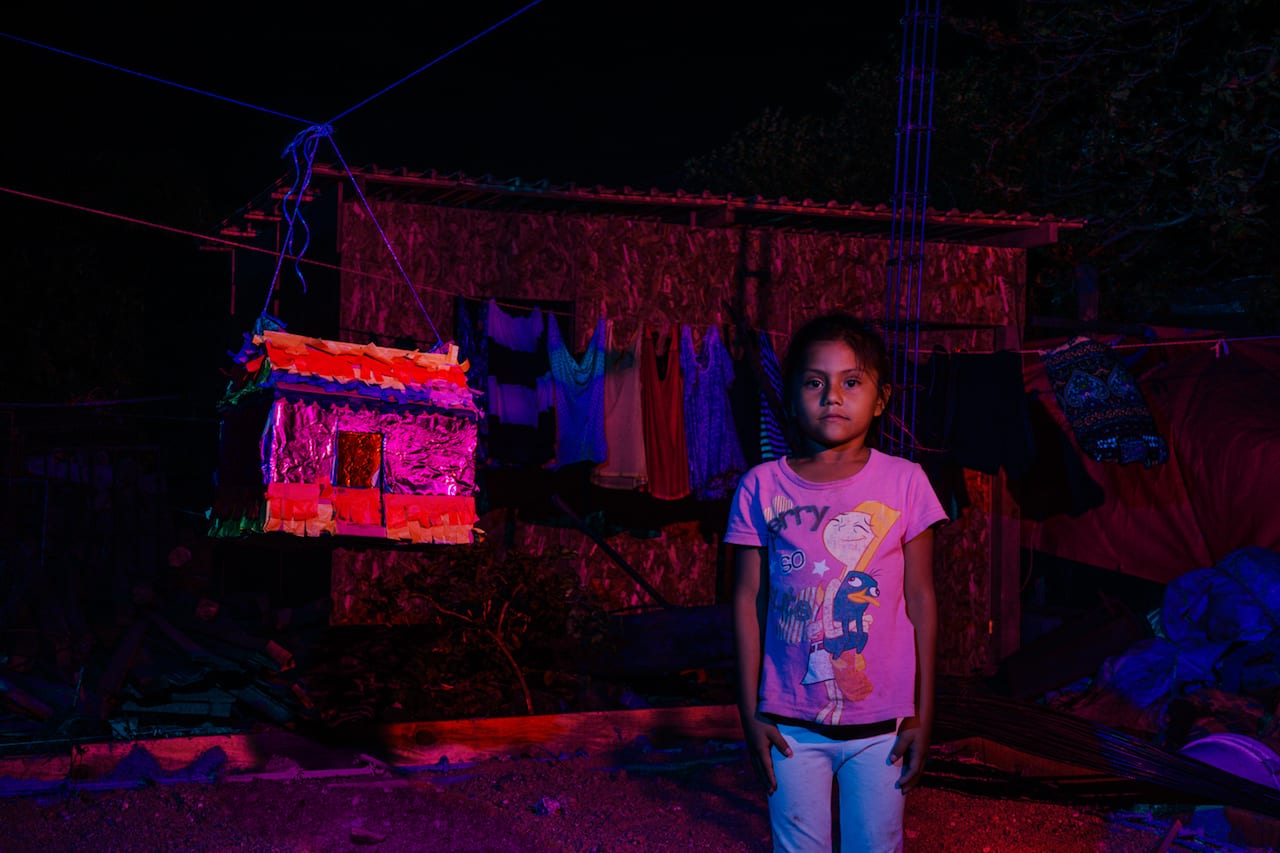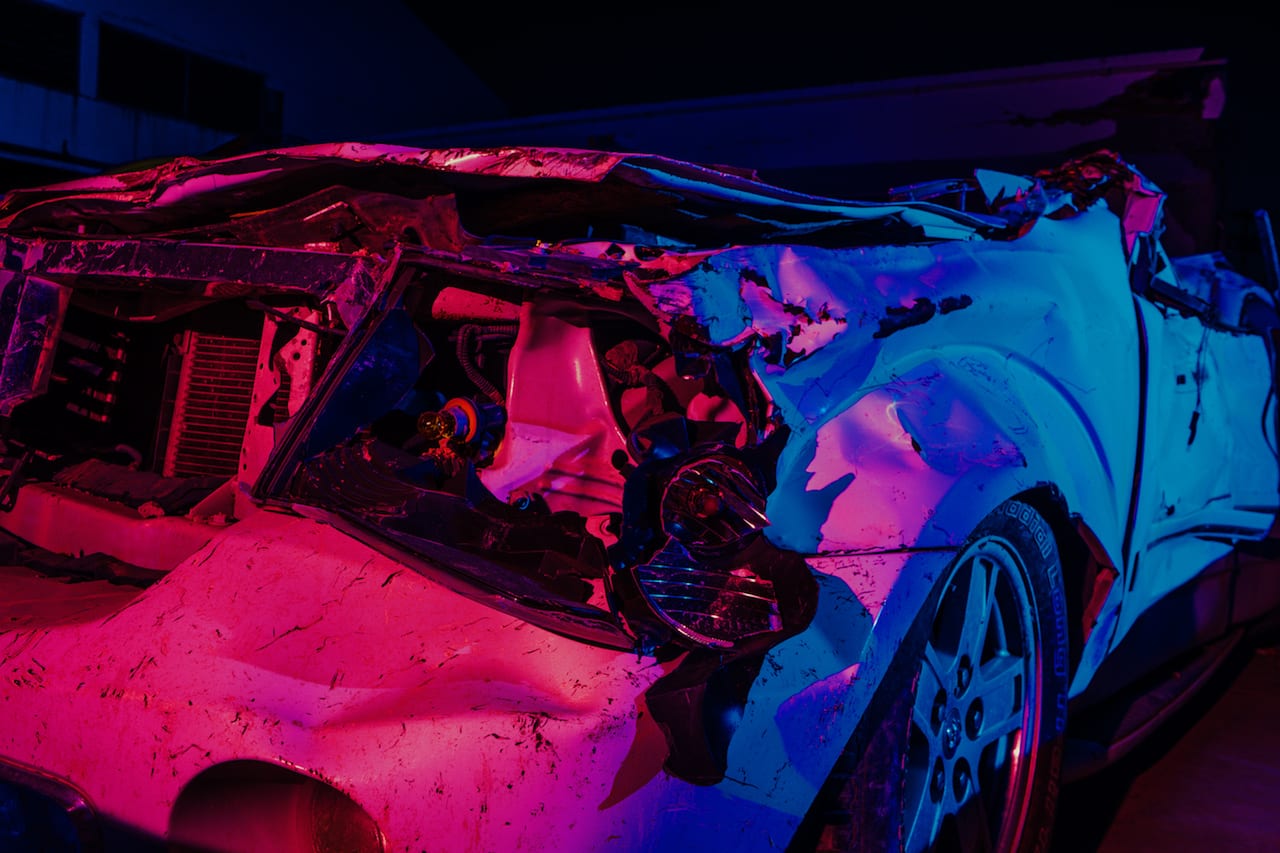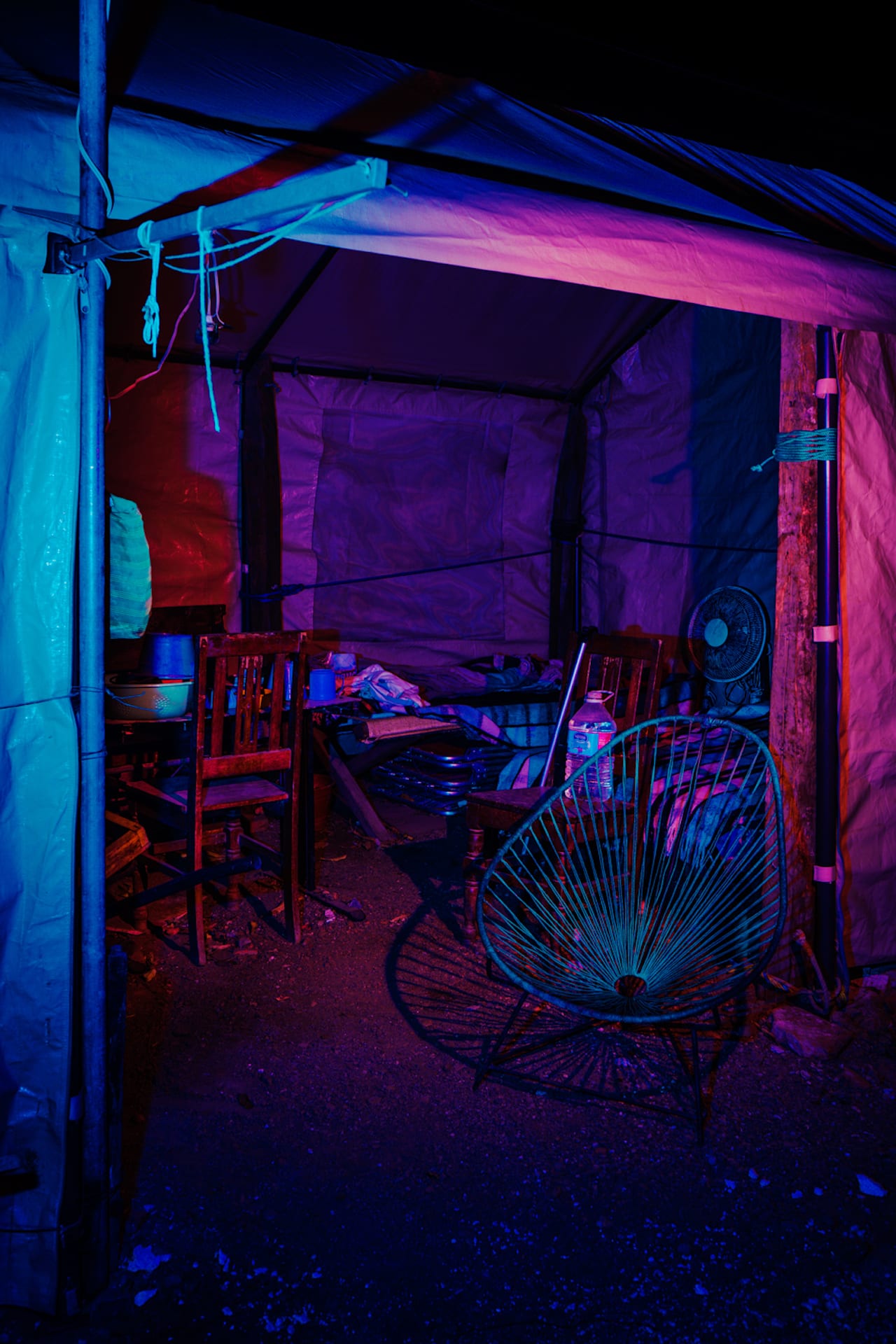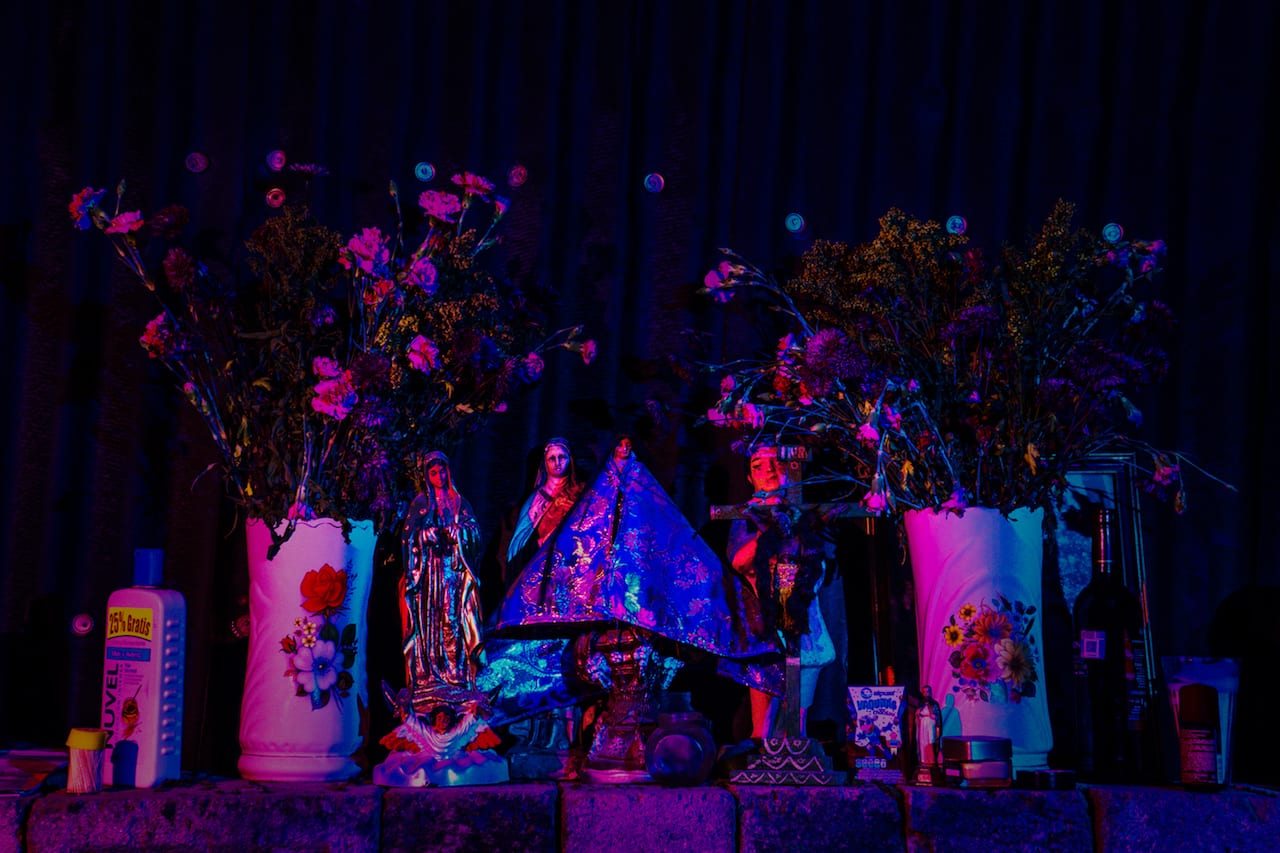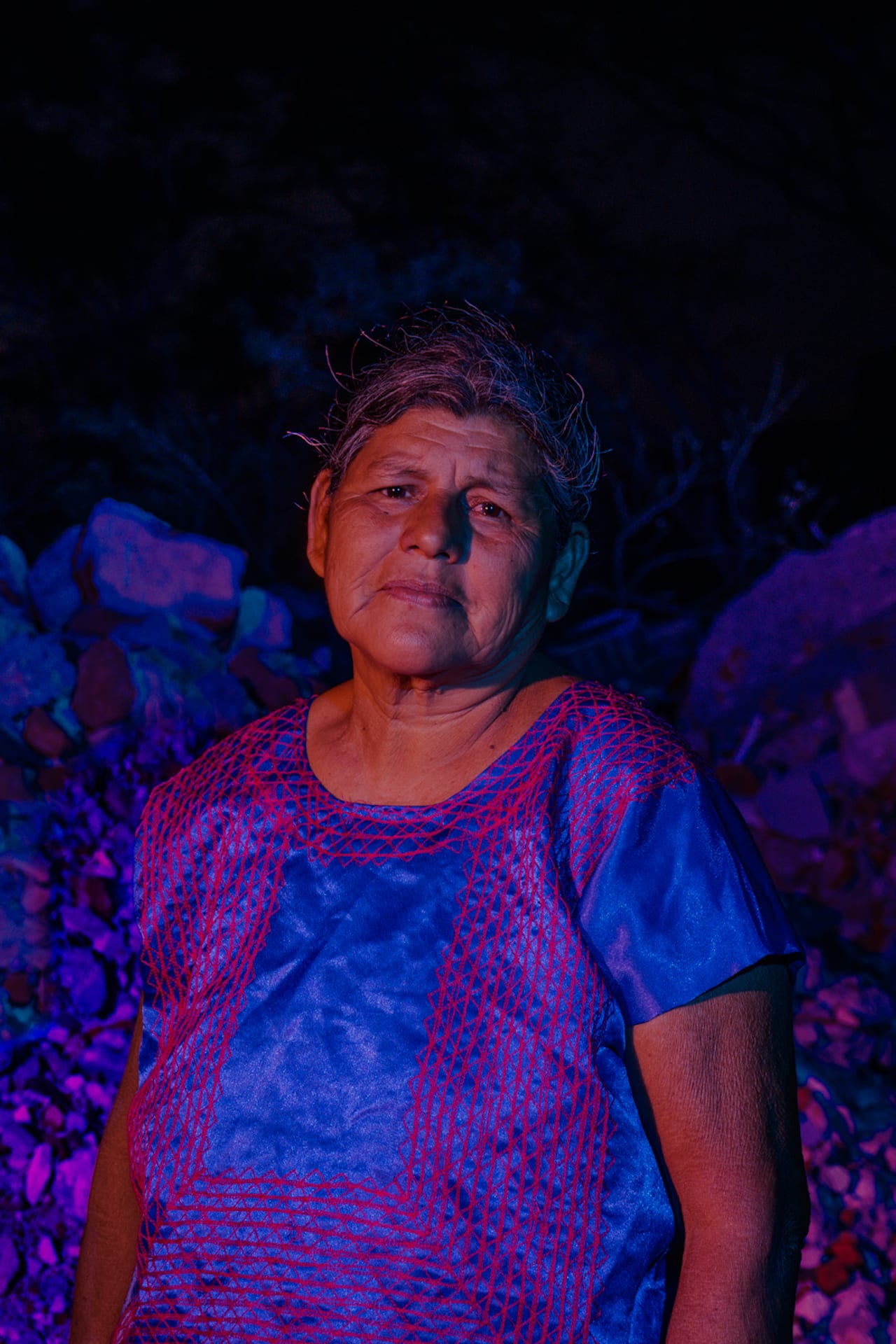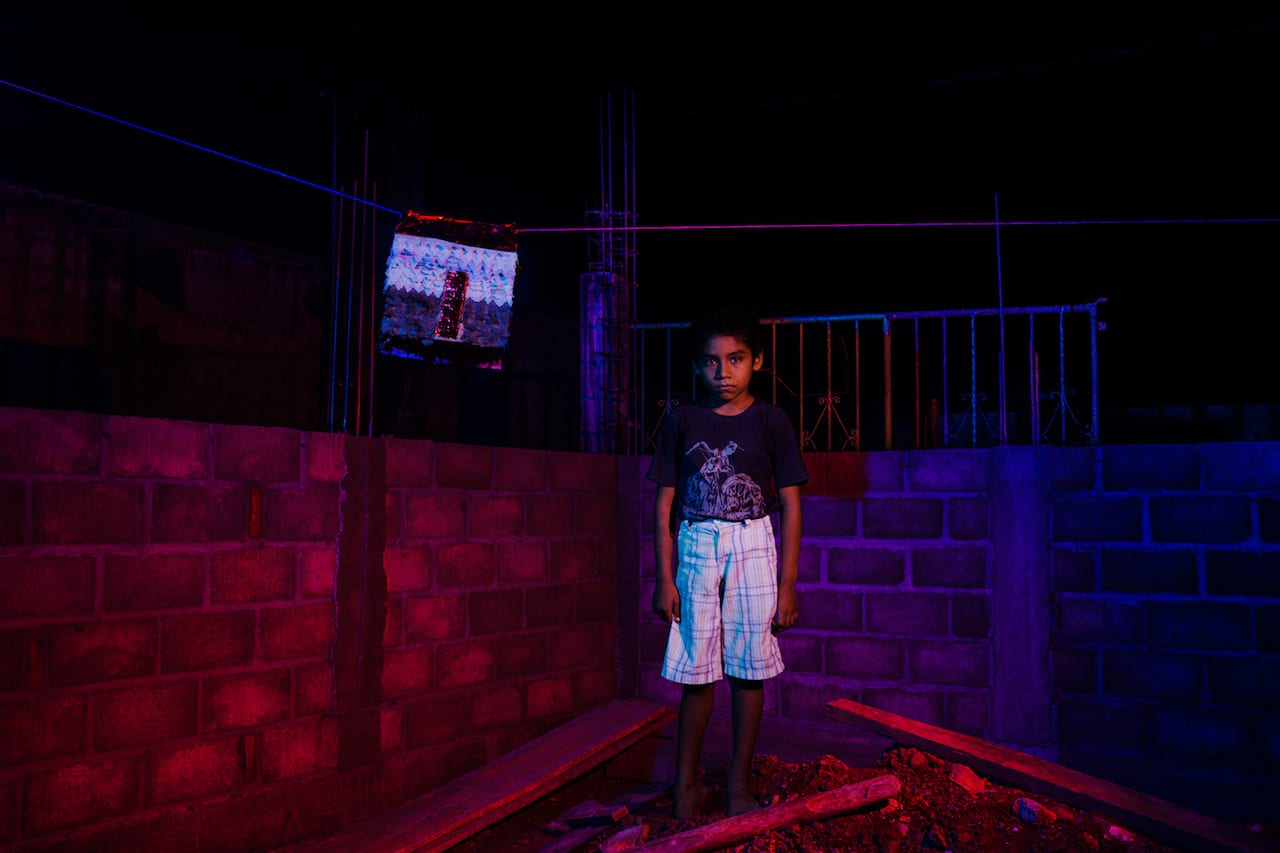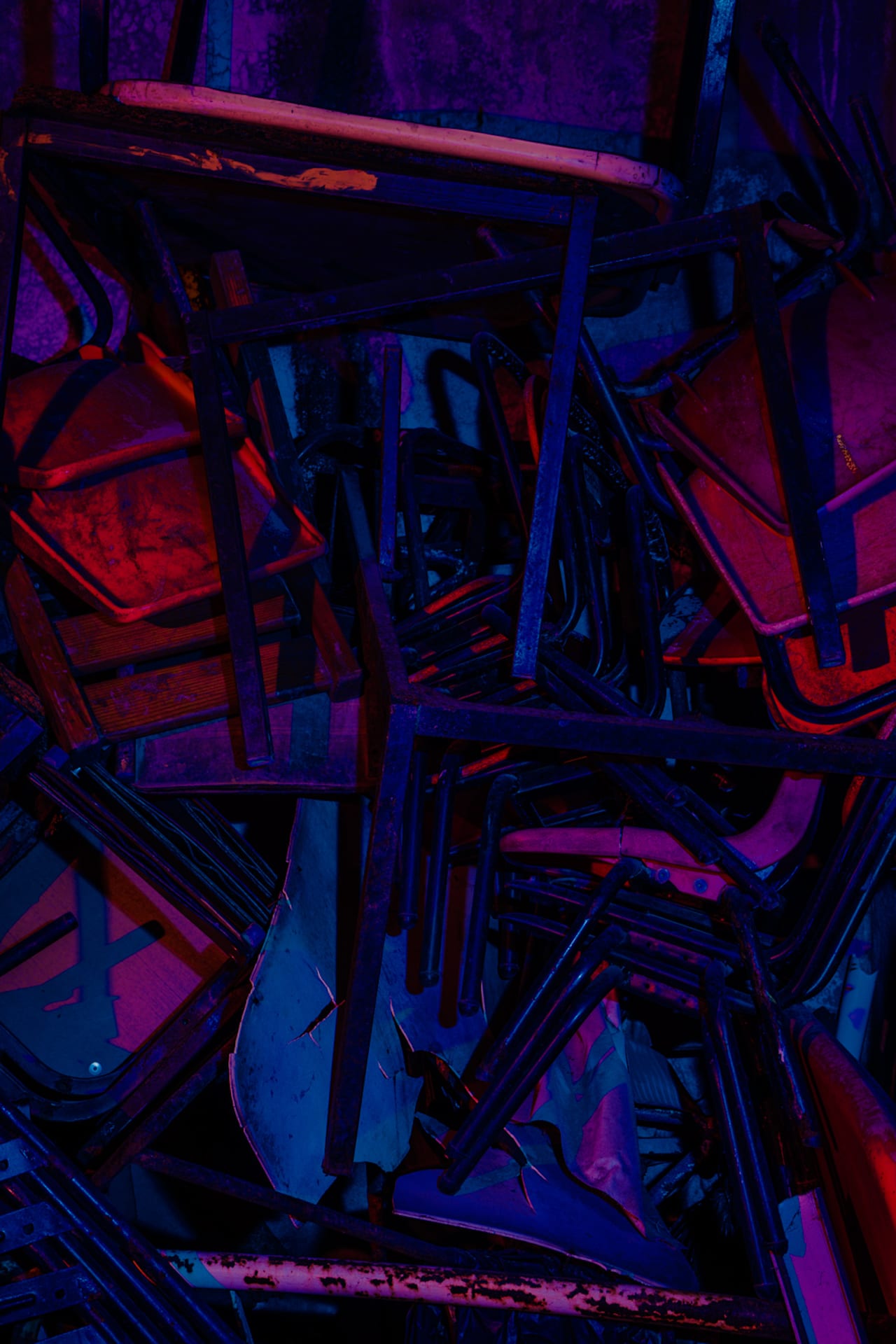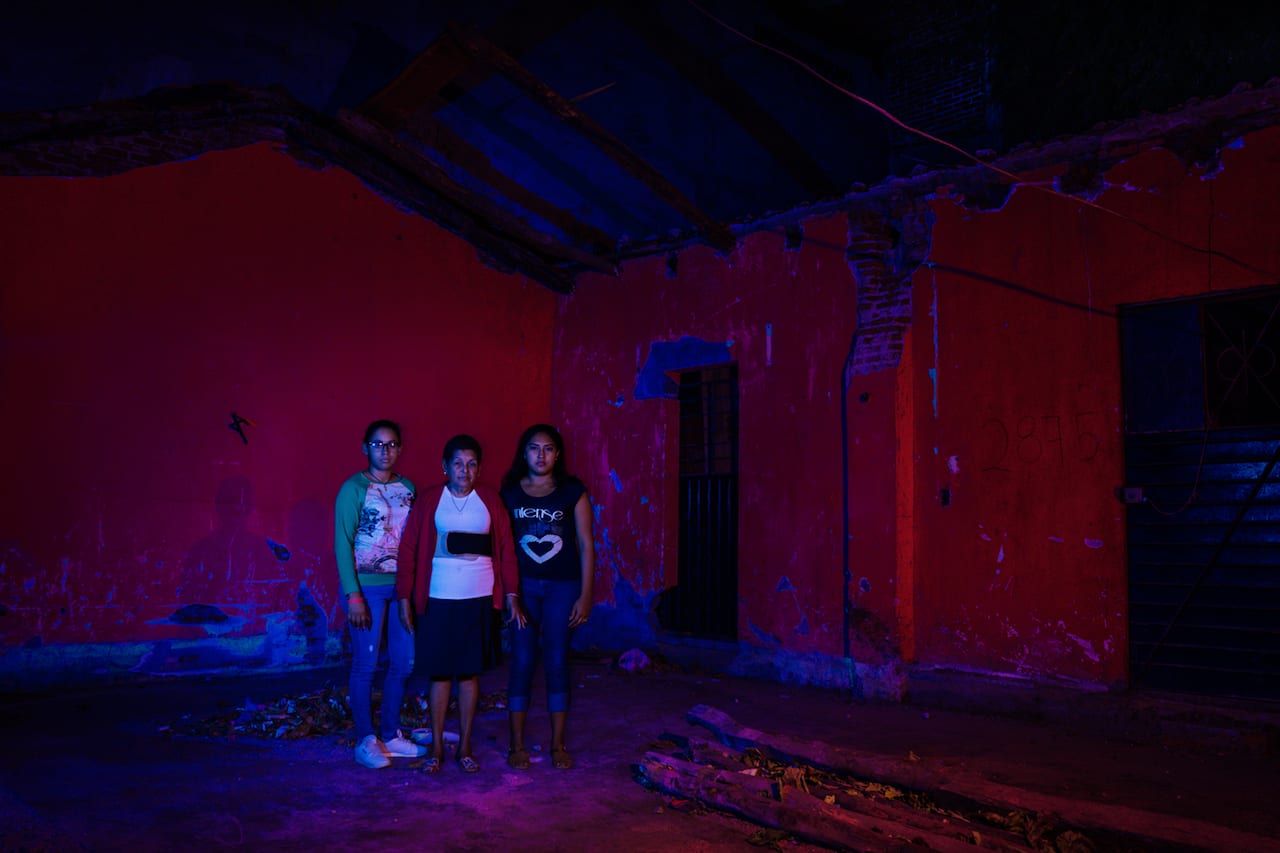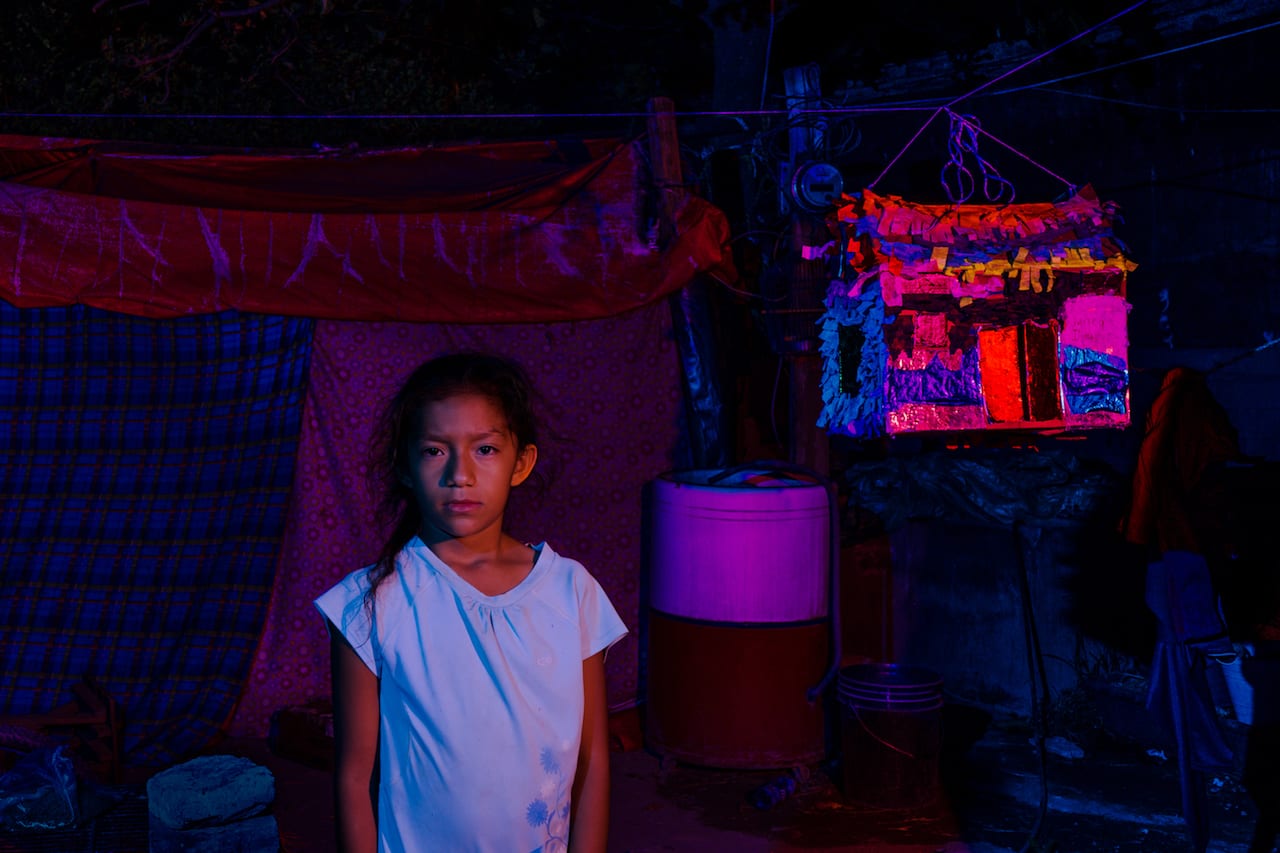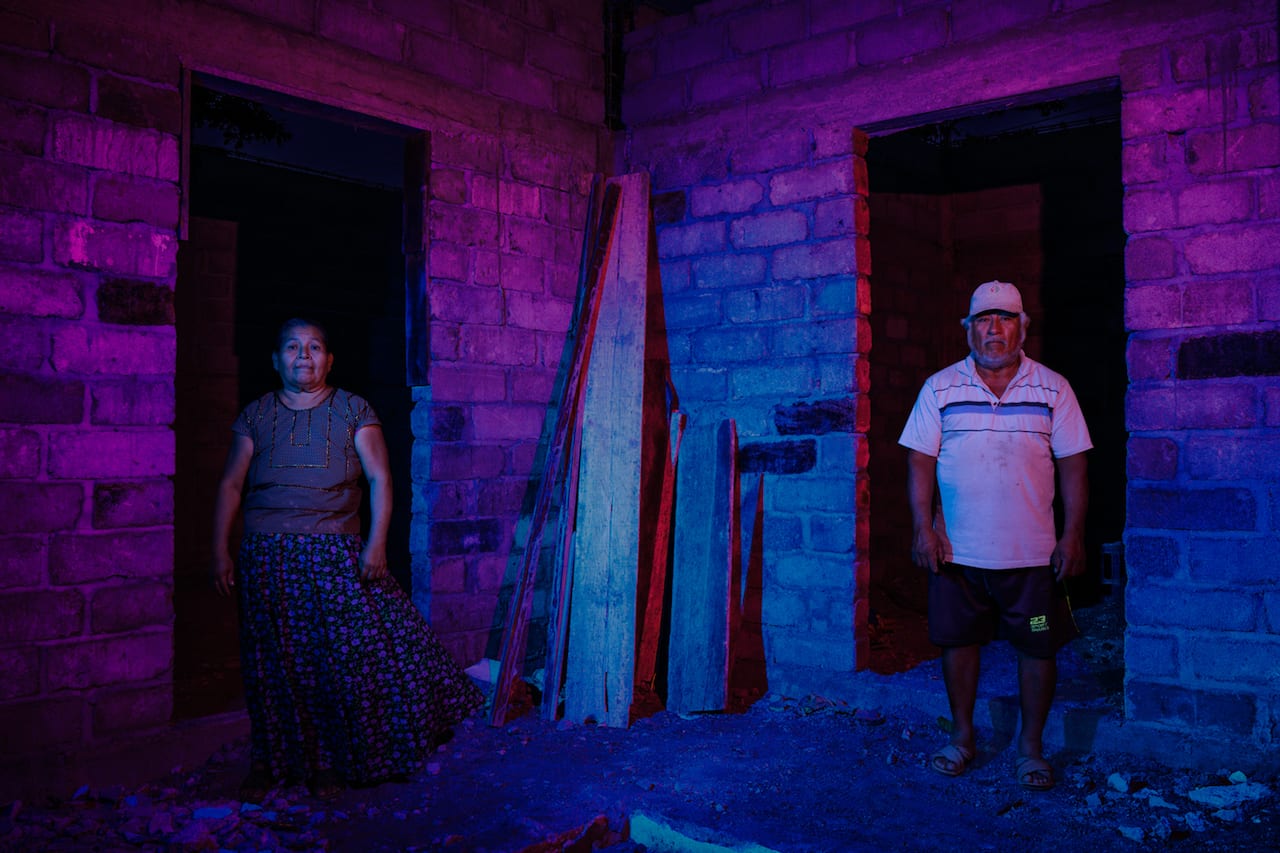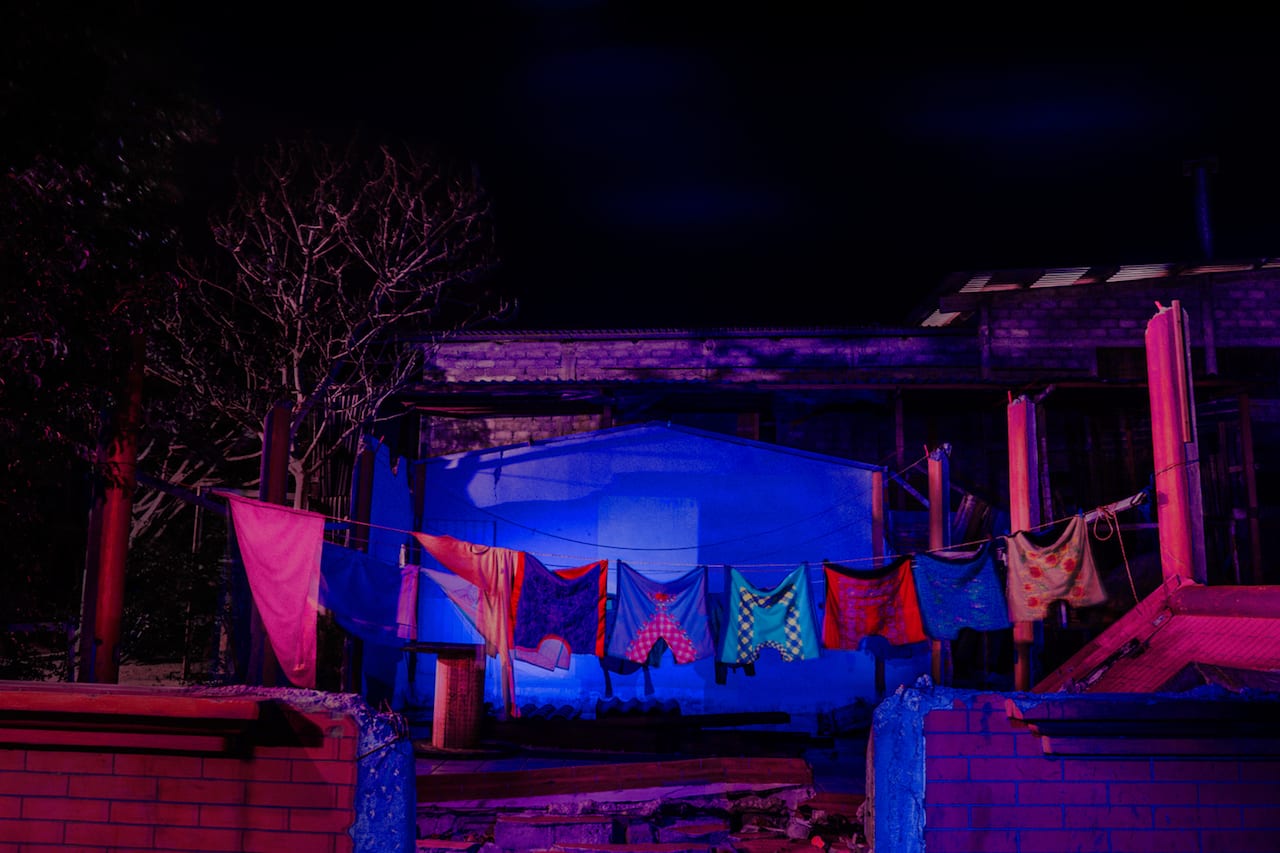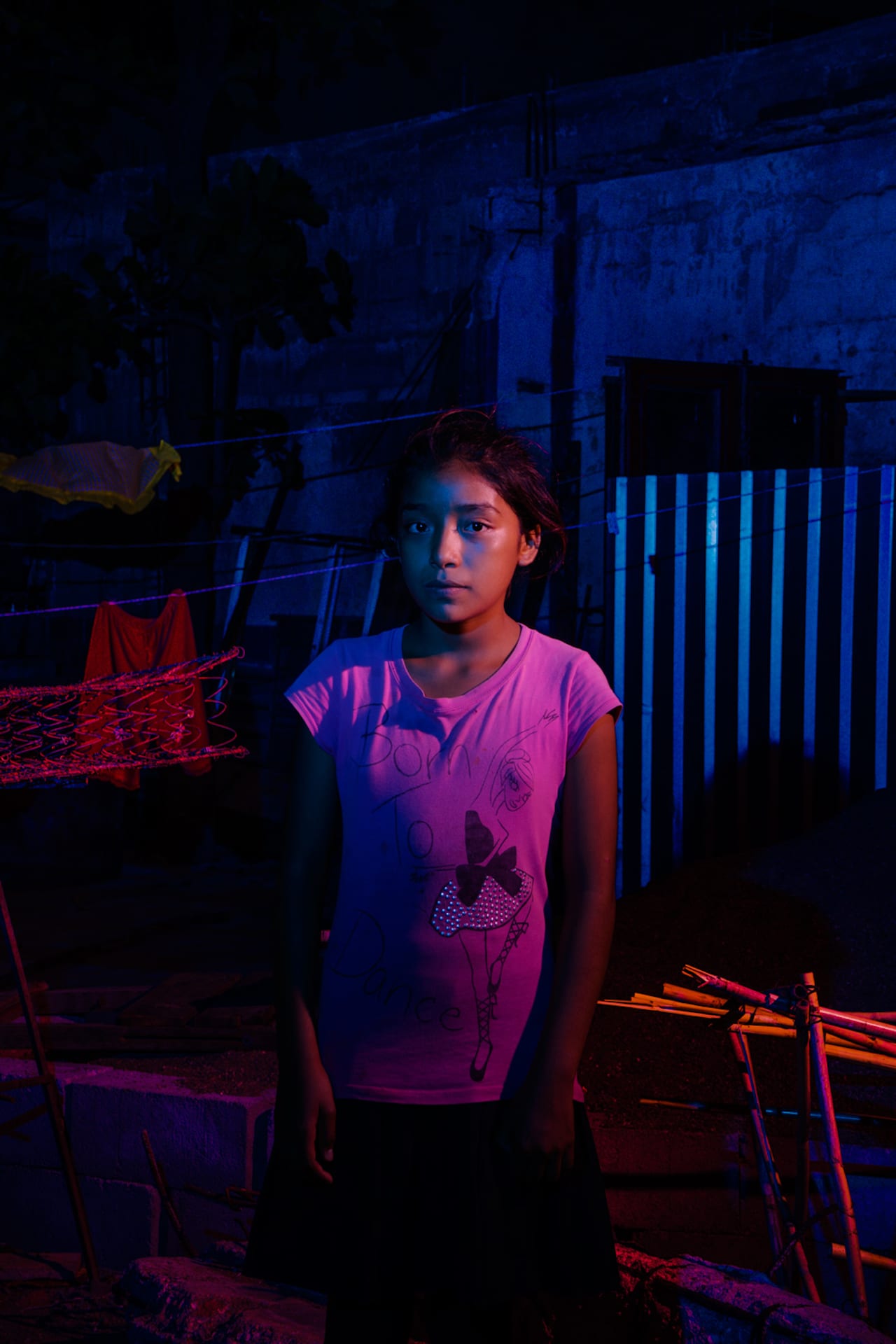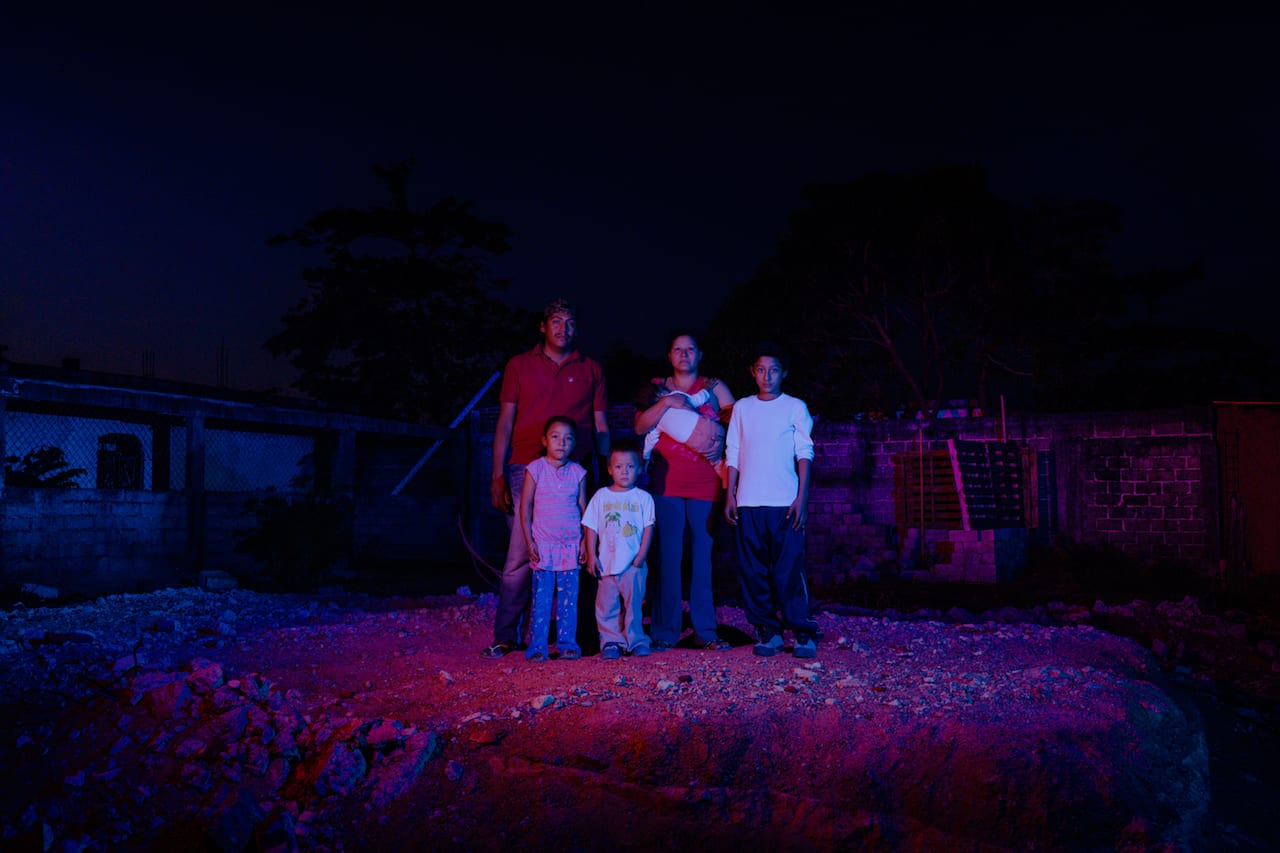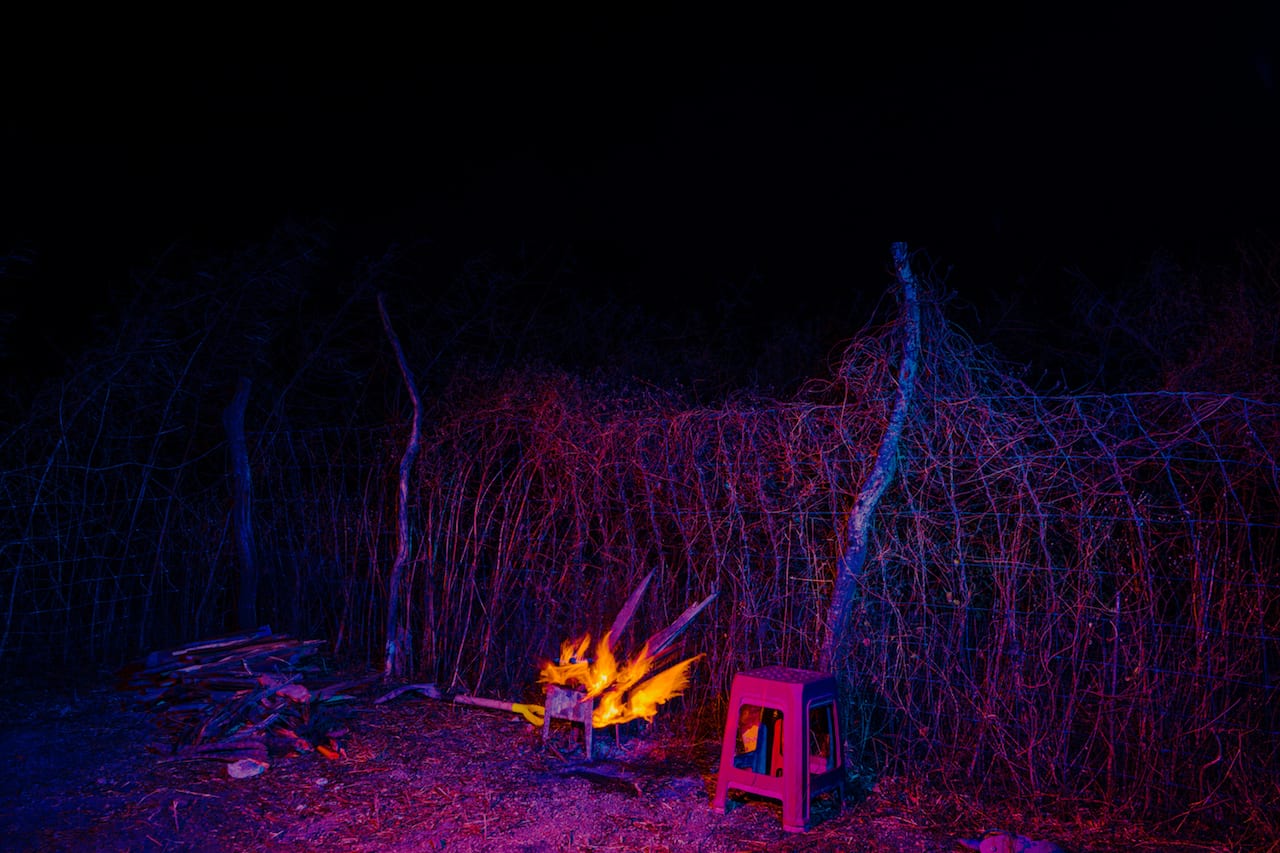On 7 September 2017, just before midnight, a magnitude 8.1 earthquake hit Mexico’s southern coast, the second strongest earthquake in the country’s history. It was felt by 50 million people across Mexico and, in the heavily affected states of Oaxaca and Chiapas, killed dozens of people and left over 100,000 homes damaged.
When the earthquake hit, Andres Millan was living in his hometown in Bogota, Colombia, preparing for a four-month residency that would start in November at Casa El Ocote, a gallery and cultural centre in Juchitán, Oaxaca. At quarter to midnight, alerts started to pop up on Millan’s mobile phone. When he switched on the news, the first image he saw was of the Mexican flag at the Municipal Palace in Oaxaca, lit up by lights coming from police cars.
My home is my castle references these first images that Millan saw from Colombia when the earthquake hit. “I wanted to recreate the light from the police car, so the photos are made with two flashes, one with a red filter and another with a blue one. The mixture of colours made the images acquire that pink colour,” he explains.
For the project, Millan photographed families and what was left of their homes, focusing on the idea of a house as a structural core of the family. Alongside the portraits are bright flames stretching across rubble, and piñatas made by the children in a workshop run by local artists, which represent their idea of home.
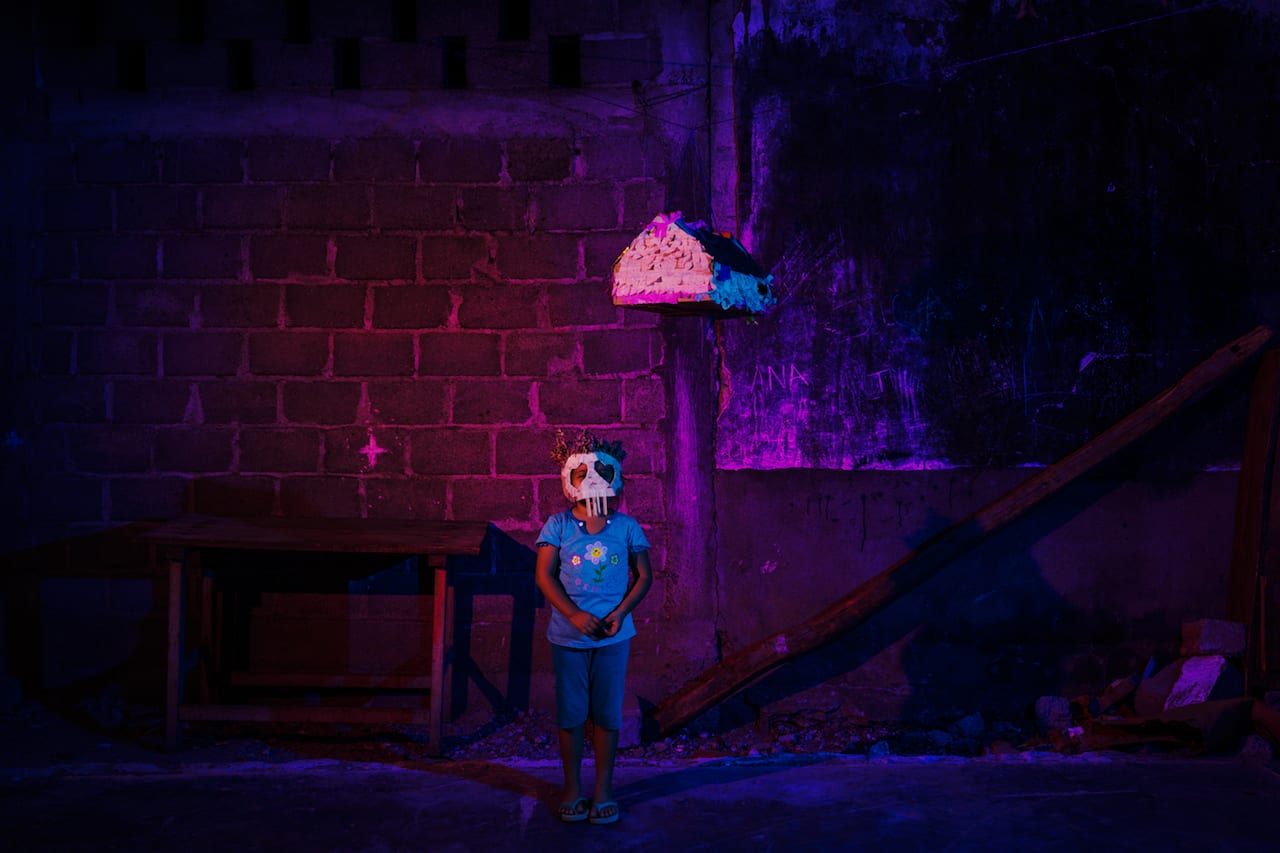
According to Millan, after the earthquake many families living in the affected areas were forced to abandon their homes and move into temporary shelters. But four months later, towards the end of his residency, most of the shelters were closed and many families were left homeless.
With the help of Casa el Ocote, Millan was able to support the reconstruction of six houses in Oaxaca during his residency. “But the problem is much deeper than the people think,” he says, explaining how rental prices have risen since the earthquake, along with the price of construction materials.
“The aid must keep coming,” he adds. “There are still areas that have not even reached 30% reconstruction. These people not only lost their homes, they also lost their jobs, schools, religious sites and public spaces.”
https://cargocollective.com/AndresMillan
